Edible Flowers – from Apple Blossoms to Zucchini
Edible flowers are a great way to add color and flavor to dishes, plus they make wonderful companion plants. We share which parts of flowers are edible (flower petal or whole flower), how they taste, and how to use them.
The top 15 list features flowers that are most commonly used and easily identified. For the adventurous eaters, we've also added an edible flower list featuring over 50 more flowers you can eat.

Whether you're nibbling petals or cooking up buds, eating flowers adds fun to any table. You can use edible flowers fresh or dried.
The light floral taste of most flowers works well in sweet dishes, like topping a cake, custard, or ice cream. I like using the smaller flowers, such as Johnny Jump Ups, in ice cubes. (These are great with mint leaves in iced tea.)
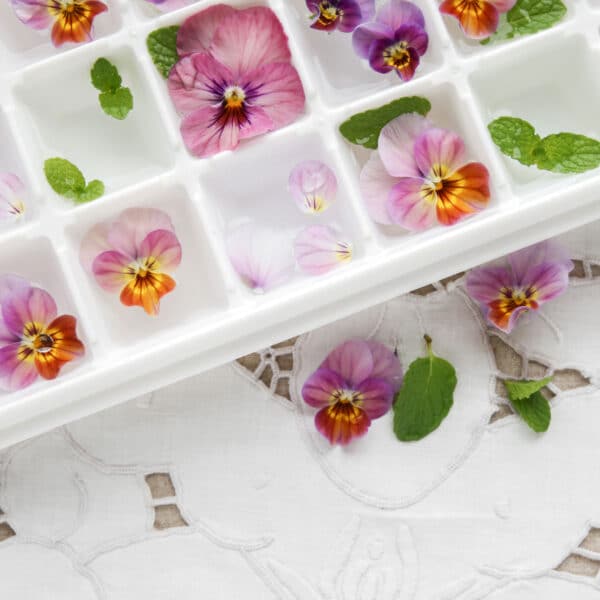
Larger flowers, like squash blossoms, are sturdy enough for stuffing. Herb flowers carry the flavor of their herbs, so they may work well in savory dishes.
Before Using Edible Flowers
Before your turn your garden flowers into dessert, there are a few important things to know.
- Not every flower is safe to eat. Make sure you have a positive ID before sampling. Sometimes the same common name refers to different species in different areas, so double check before eating.
- Don't harvest edible flowers from roadsides or areas contaminated with pesticides or other chemicals. If an area has heavy animal use, harvest from another area. (I had a reader ask if you can wash off goat pee. I don't recommend trying it.)
- Try a small sample before eating a larger quantity. Although rare, allergic reactions are possible.
- Use strong flavored edible herb flowers sparingly.
- Some flower petals, such as roses, have a small white area on the petals where they attach to the flower. Remove the bitter white base of the petals for best flavor.
- If there's been a recent rain, I don't bother washing the flowers, since the flavors are so delicate. If you're not sure about dust, rinse them in cool water and gently pat dry.
You can buy fresh edible flowers online, but they are expensive. Dried flowers are more readily available. A good guide book like The Edible Flower Garden is helpful.
#1 Apple Blossoms (Malus species)
Our first home was filled with crab apple trees in the backyard. The fruit was small and tart, useful for jams and jellies, but mostly we just enjoyed the flowers.
All apple blossoms are edible, though you may reduce the fruit harvest if you gather too many. Make sure you harvest only from trees that have not been sprayed.
Use the petals, not the entire flower. The flavor is delicate, with just a hint of the apples to come.
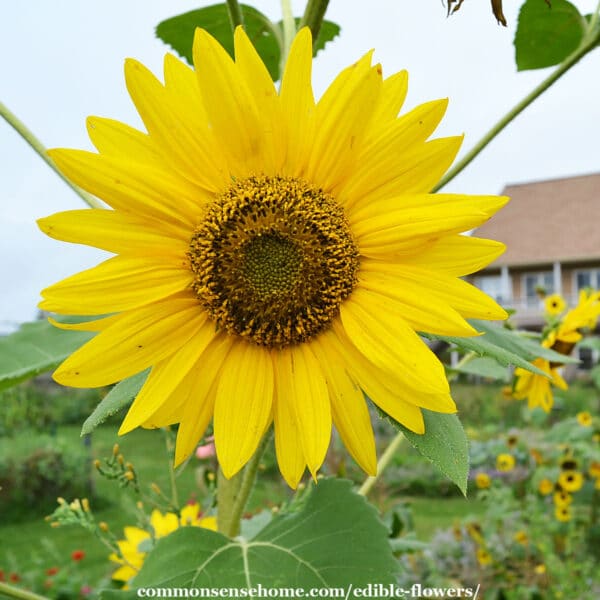
#2 Sunflowers – genus Helianthus
Sunflowers add height and visual interest to the garden. There are many different varieties of sunflowers, with different colors and sizes. Look for shorter varieties with lots of flowers for harvesting buds and flowers. Taller oilseed types are bred for seed production.
The leaves, roots, buds, petals and seeds are edible. When the sunflower is in the bud stage, it tastes similar to artichokes. Once the flower opens, the petal flavor is slightly bitter.
Sunflower petals add amazing color, but can be a tad bitter. Use them sparingly in cooking.
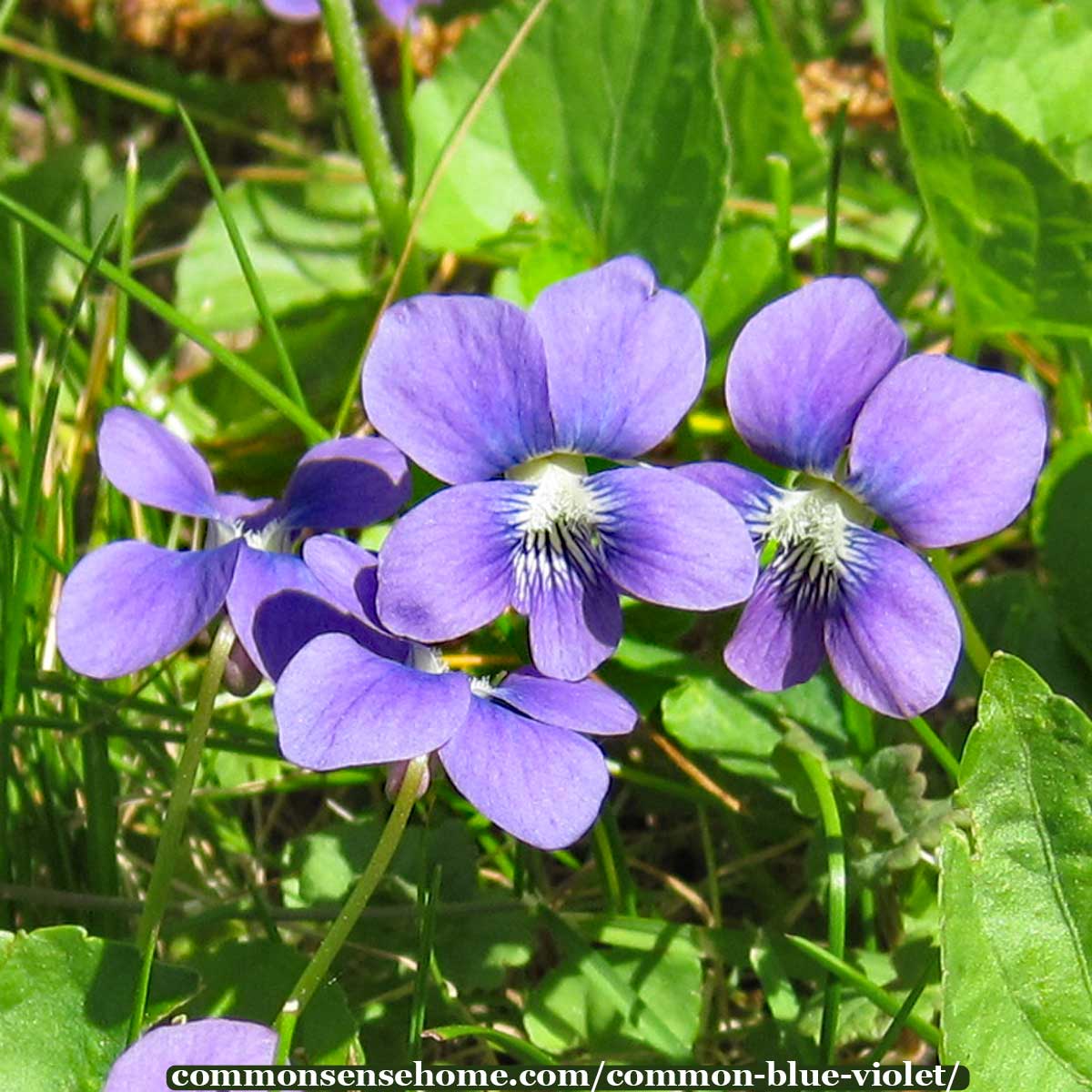
#3 Violets family – including Viola Odorata and Viola sororia
Violets add a bright flash of color to shaded areas of the yard. Their delicate fragrance perfumes the air, and their tender greens make an interesting addition to salads.
Both the flowers and leaves are edible. The flowers have a sweet, perfumed flavor. Leaves are bright and grassy.
Use violet flowers fresh to preserve their lovely color and aroma. They can also be made into jellies or candied. Sugared violets make a lovely garnish on top of cakes, muffins or pastries. Get more information on violets and the recipe for violet jelly in Weekly Weeder #23.
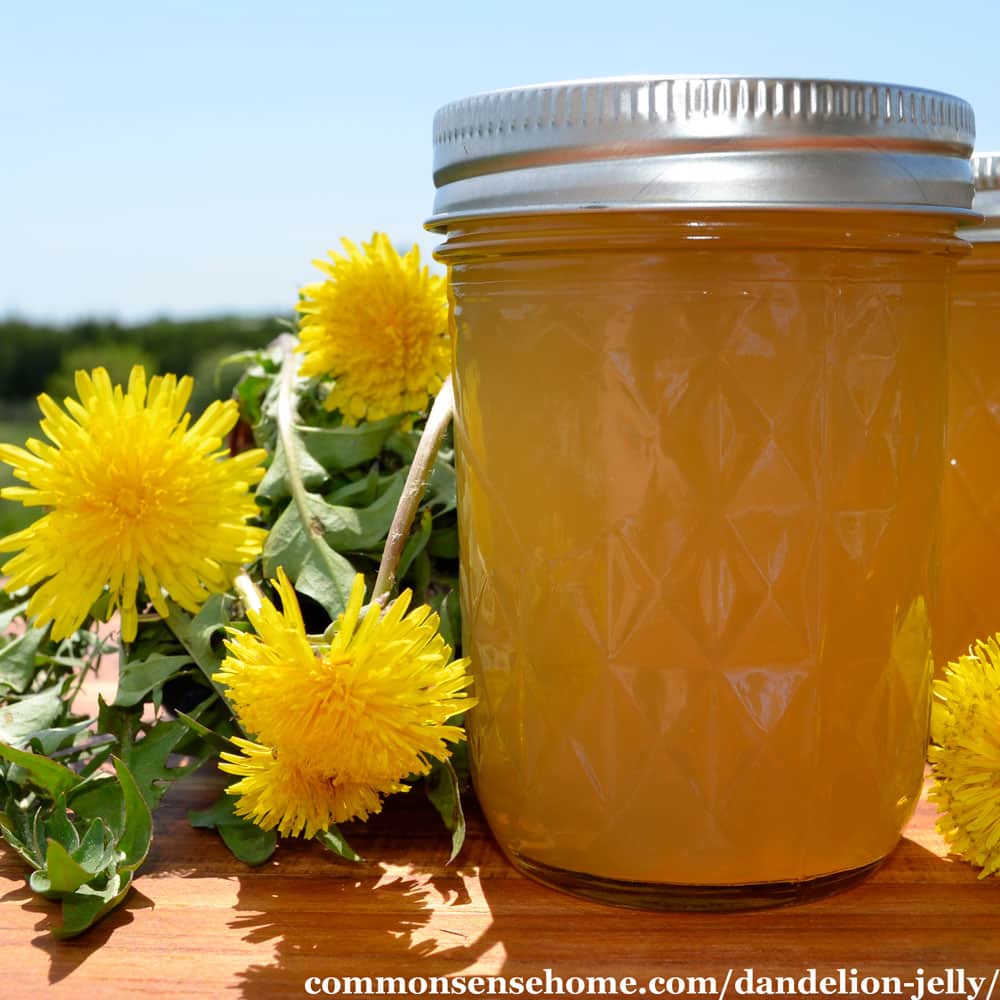
#4 Dandelions – Taraxacum officinalis
Love them or hate them, most people can easily identify dandelions. They have a rich history of use for both food and medicine. When harvesting dandelions, make sure the area has not been treated with herbicides for at least three years.
Dandelion are entirely edible – leaves, seeds, flowers and roots. Dandelion petals have a sweet, mild honey like flavor. The base of the flower is somewhat bitter, so that's best cooked before eating.
Dandelion flowers brighten desserts, pastries, breads, wines, jellies and jams. Fried dandelion blossom fritters taste very similar to mushrooms. We have a recipe for homemade dandelion wine,

#5 Roses – genus Rosa
All roses are edible, but look for heirloom roses for the best fragrance and flavor. Many of the modern hybrids focus on looks only.
Petals and rose hips (the fruit after the flower fades) are edible. Roses taste sweet, with subtle undertones ranging from fruit to mint to spice. If a rose smells good, it will have a good flavor.
Use rose hips to make jam, tea, or candy. Get our rose hip jelly recipe here. Use rose petals to make rose water or teas. Use them for color on salads and cakes.

#6 Hibiscus – Hibiscus sabdariffa
Hibiscus adds vibrant color to warm climate landscapes. If you don't have fresh available, use dried flowers to add a tropical twist to foods.
The flowers and roots of hibiscus are edible. Hibiscus flowers have a cranberry-like flavor with citrus overtones.
Use hibiscus in teas, soups, garnishes, water infusions or jelly. Hibiscus flowers may be stuffed like squash blossoms.

#7 Pansy – including Viola Tricolor L and Viola wittrockiana
Pansies are one of the most popular edible flowers. They're also known as Johnny-jump-up, heartsease, and love-in-idleness. Pansies do best in cooler temps, so enjoy them in your garden in spring and fall.
Both the petals and sepals are edible (the entire flower head). Pansies have a slightly sweet green or grassy flavor. If you eat only the petals, the flavor is extremely mild. If you eat the whole flower, it tastes more green.
Use edible pansies in soups, cocktails, desserts, salads or as a garnish.
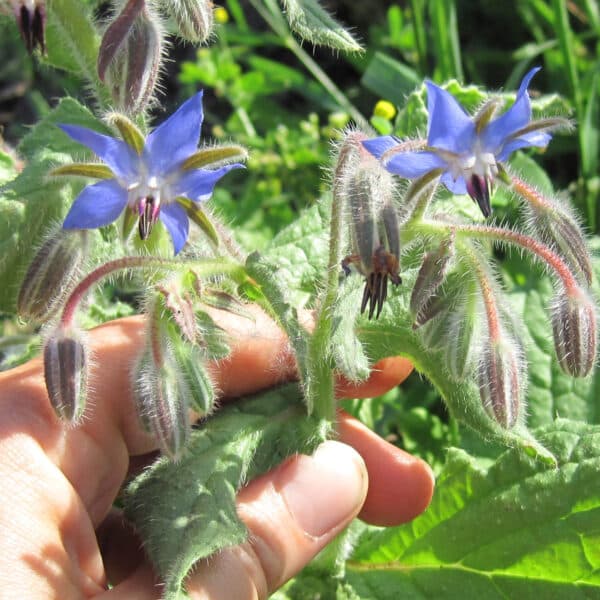
#8 Borage (Borage officinalis)
Borage is a self seeding annual much loved by pollinators. I planted it once and it's been a part of our garden ever since. The plants can get quite large, so make sure to give it room to grow.
Both the flowers and leaves are edible. Borage flowers and leaves have a mild cucumber flavor. The leaves are hairy, so I generally stick to the flowers. (The leaves can cause loose stools in large doses, too.)
Add borage flowers to salads or use them in desserts. Chickens love them, too.
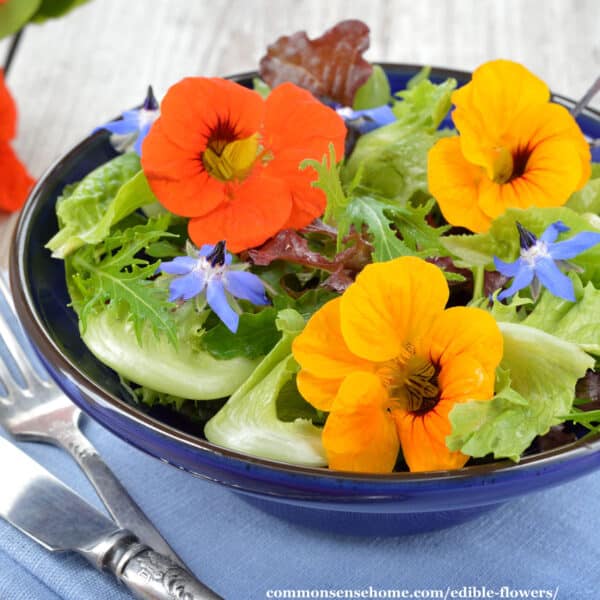
#9 Nasturtium – Tropaeolum majus
Nasturtium plants are vigorous growers, so give them plenty of room, or look for dwarfing varieties that stay more compact. Nasturtiums make good companion plants in the melon patch.
Young leaves, flowers, and buds can be eaten. Flowers have a sweet essence from the nectar, followed by a bold peppery tang.
Use nasturtium buds in vinegar infusions, salads, cocktails. Pickled seed pods are less expensive substitute for capers. Use entire flowers to garnish platters, salads, cheese toppings, open-faced sandwiches, and savory appetizers.

#10 Lavender – Lavandula angustifolia
Lavender likes cool, moist winters and hot, dry summers. For more information about cultivation and lavender recipes, visit, “Lavender – Growing Tips, & Uses in the Kitchen and Home“.
Both the leaves and flowers are edible. Lavender has a wweet, floral flavor, with lemon and citrus notes.
Try lavender flowers in desserts, jams, cocktails, drinks, breads, meat dishes, garnishes, cheeses. Finely mince lavender leaves and sprinkle on savory foods for flavor. Use the stems of sturdy lavender varieties to make kebab skewers for grilling.
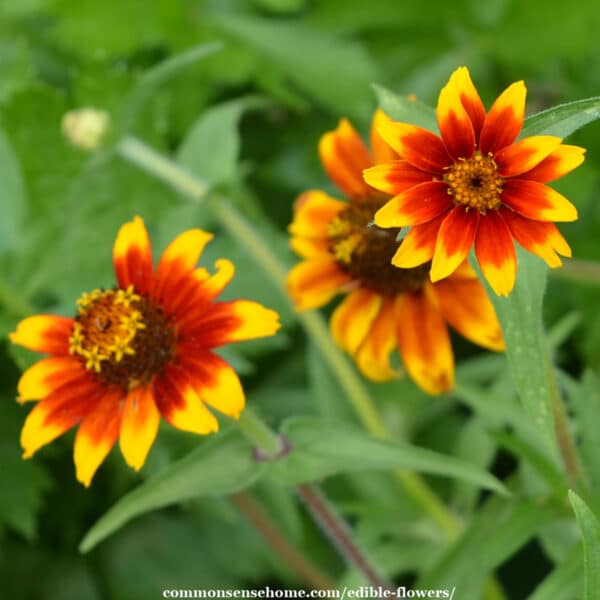
# 11 Calendula – Calendula officinalis
Calendulas are sometimes known as “English marigolds”, or “marigolds”. They should not be confused with French marigolds, Tagetes patula, which is also commonly called “marigold”. French marigolds are not edible.
Calendula petals are edible, with a light citrus flavor as a base. Flavors range from spicy to bitter, tangy to peppery.
Calendulas are sometimes called “poor man's saffron”. Use calendula petals in cakes, pastries, salads, salad dressings, cocktails, custards, and sauces.

#12 Lilac (Syringa vulgaris)
The heady scent of lilac flowers is unmistakable, and these springtime beauties are edible, too. The flowers are small, but plentiful and easy to gather. The most time consuming part of prepping them is removing them from the stem.
The flowers have a delicate flavor and color, and work well for sweets, such as candied lilacs or lilac jelly.
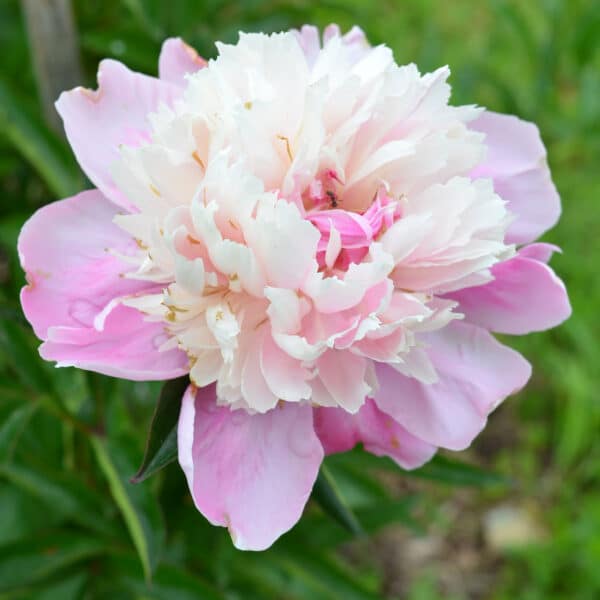
#13 Peony (Paeoniaceae species)
Peonies are another farmstead favorite, with their bold, abundant blooms making an appearance around Mother's Day in our area. The flowers are a favorite of ants, so be sure to clean the petals well before use.
Add the petals to salads, or infuse them in white wine for a unique apéritif. Try their delicate floral flavor in jellies or syrups. The dried petals work well for tea.
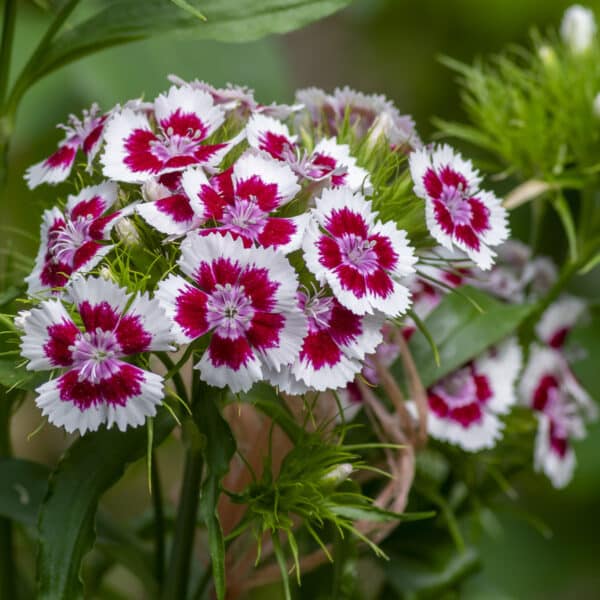
#14 Carnations and Pinks (Dianthus species)
From the little Garden Pink to large hothouse carnations, the Pink family is edible. Before you snack on a bouquet, it's best to check if the flowers have been sprayed. (You may be able to find farmers market flowers that are safe to eat. Avoid eating flowers from commercial florists.)
The best types for eating are the smaller varieties, as those bred for massive flowers tend to be less fragrant. Clove Pinks (Dianthus caryophyllus) were a historical favorite for culinary use.
Use the flower petals to add a mild clove flavor with a hint of pepperiness to dishes. They work well in syrups and infusions, cakes and even for making wine.
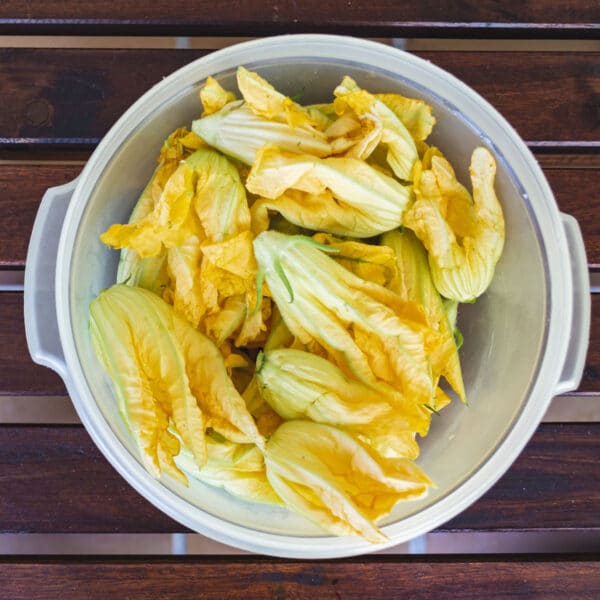
#15 Zucchini and Squash Blossoms (Cucurbita species)
When squash plants start producing blossoms, the first bright yellow flowers are always male and won't produce fruit. This means it's safe to harvest some for eating without ruining your crop.
You can recognize male squash blossoms because they do not have a swelling at the base of the flowers. (The swelling is only found on female flowers, which grow into full-sized fruit after pollination.) As long as you leave some male flowers behind once the female flowers show up, the plants will make squash.
All squash blossoms are edible, including winter and summer squash varieties. Squash blossoms have a mild vegetable flavor, similar to zucchini or yellow squash
You can eat squash blossoms fried, baked, stuffed, in soups, on salads, in pastas, and in casserole dishes.
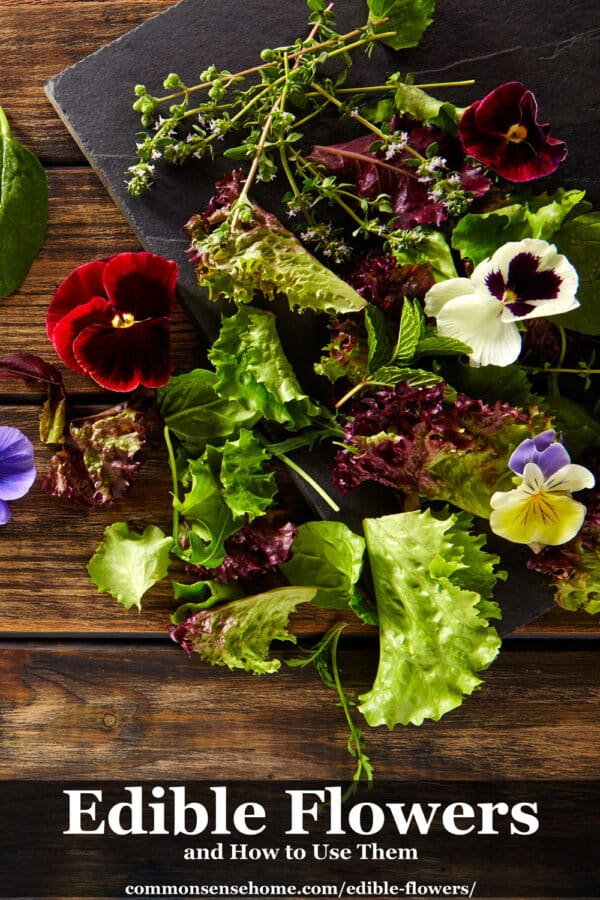
More Edible Flowers
The following edible flowers are featured in “The Edible Flower Cookbook” by Adrienne Crowhurst. Flowers featured in the Weekly Weeder series are linked below.
- Agrimony (Agrimonia eupatoria)
- Golden Alexanders (Ziziz aurea)
- Bee Balm (Monarda didyma)
- Betony (Stachys palustris)
- Broom (Cytisus scoparius)
- Burnet (Sanguisorba minor)
- Catnip (Nepeta cataria)
- Cattail (Typha latifolia)
- Chamomile (Matricaria chamomilla)
- Chicory (Cichorium intybus)
- Chrysanthemum (Chrysanthemum species)
- Clary (Salvia sclarea)
- Clover (Red Clover)
- Coltsfoot (Tussilago farfara)
- Costmary (Chrysanthemum balsmita)
- Cowslip (Primula veris)
- Daisy (Bellis perennis)
- Day Lily (Hemerocallis fulva)
- Elder (Sambucus nigra)
- Gladiolus (Gladiolus species)
- Goat's Beard (Tragpogon pratensis)
- Goldenrod (Solidago species)
- Gorse (Ulex europaeus)
- Grape Hyacinth (Muscari atlanticum or Muscari botryoides)
- Hawthorne (Crataegus species)
- Heather (Calluna vulgaris)
- Hollyhock (Althea rosea)
- Honeysuckle (Lonicera species)
- Hop (Humulus lupulos)
- Hyssop (Hyssopus officinalis)
- Jasmine (Jasminum species)
- Jonquil (Narcissus jonquilla)
- Lemon Blossom (Citrus limonum)
- Linden (Tilia american)
- Locust (robina pseudoacacia)
- Marsh Marigold (Caltha palutris)
- Meadowsweet (Filipendula ulmaria)
- Melilot (Melilotus alba)
- Melissa (Melissa officinalis)
- Milkweed (Ascleias syriaca)
- Mimosa (Mimosa pudica)
- Motherwort ( Leonurus cardiaca)
- Mullien (Verbascum thapsiforme)
- Mustard (Brassica species)
- Orange Blossom (Citrus species)
- Passionflower (Passiflora coerulea)
- Plum Blossoms (Prunus species)
- Poppies (Papover species)
- Primrose (Primula vulgaris)
- Redbud (Cercis canadensis)
- Rosemary (Rosemarinus officinalis)
- Saffron (Crocus sativus)
- Spiderwort (Tradescantia virginiana)
- St. John's wort (Hypericum perforatum)
- Tansy (Tanacetum vulgare)
- Thistle (Circium species)
- Thyme (Thymus species)
- Tulip (Tulipa species)
- Verbena (Verbena species)
- Woodruff (Asperula odorata)
- Wormwood (Artemesia absinthium)
- Yarrow (Achillea millefolium)
- Yucca (Yucca filamentosa)
What's your favorite edible flower? Leave a comment and let us know.
About the Author…

This article is written by Laurie Neverman. Laurie and her family have 35 acres in northeast Wisconsin where they grow dozens of varieties of fruiting trees, shrubs, brambles, and vines, along with an extensive annual garden. Along with her passion for growing nutrient dense food, she also enjoys ancient history, adorable ducks, and lifelong learning.
Originally posted in 2017, last updated in 2023.

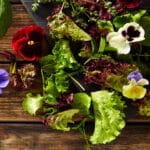

My Mom loved serving dishes with edible flowers!
She took great delight in growing them and showing us which ones and how to eat them in and out of our yard.
We grew up in the {Pacific, and I feel a little regret that I never took photos of the ones she would not have been able to grow there, but she definitely went to Heaven, and she surely has a garden of all of them now!
It took me a few minutes to pick out which ONE is the one I nibble on most. Hot race between nasturtium and honeysuckle, but who cold turn down a hit of nectar!.
Thanks for the trip down such a love-filled memory lane!
Laurie, you mentioned a problem with your eye. You also have said you have psoriasis . I had both….still have the psoriasis but an ophthalmologist discovered i had something called uveitis which is more or less like psoriatic arthritis in your eye as I understood it because it tends to deform your eyeball. She gave me an injection into my eyeball. I have had this twice. The last time must have really took as I’ve not been bothered in quite a few years now.
I really enjoy your site.
Oh my. That sounds uncomfortable.
The psoriasis, thankfully, hasn’t bothered me in years. I pulled together everything I did to put it into remission into an ebook called “Psoriasis Healing“.
My recent eye issues were with excessive floaters, to the point where they were inferring with my vision dramatically. I know I’ve been heavy on screen time working on various projects. I’ve been taking eye supplements, drinking structured water, and making myself take time to look long distances instead of staring at a monitor. It seems to be helping.
I see the eye doctor on Monday and we’ll see what she sees.
I’m glad you enjoy the site.
So much research so well organized and so beautifully presented! Many many thanks!
You’re welcome. I hope you enjoy the rest of the site, too.
Hi. I am a member of a public group in Facebook called ‘Halamang Gamot'(medicinal plant). As it was called, many post comments and asks for any tips about certain illnesses, and what herbal medicine could best help them. And most of us in our group cant afford medical consultations. And we believe in herbal medicines.And actually I tried to screenshot some of the details. They are really informative and can really be a big help to them. So, if you don’t mind me allow me to share them to these people…. Thank you and God bless.
Are you not allowed to refer them to an outside website in the group? We are constantly updating information on the site, so coming directly to the site is best.
Very informative
Thank you.
What a great article! Very well-written and informative. I never realized some of these are edible, like marigolds and peonies for instance. Thanks for sharing! Now, I am off to wander my neighborhood gardens looking for snacks! 😉
Glad you enjoyed the post. Just make sure your neighbors don’t spray your snacks!
I can’t wait to have all these erotic plants and flowers in my garden to add to my dishes. I’m so intrigued after i read this article.
I imagine you meant to say exotic!! ??